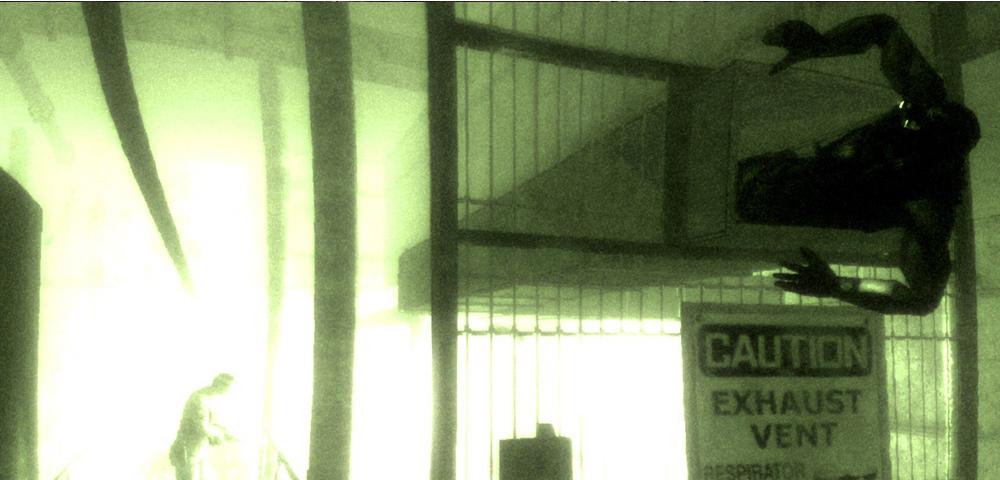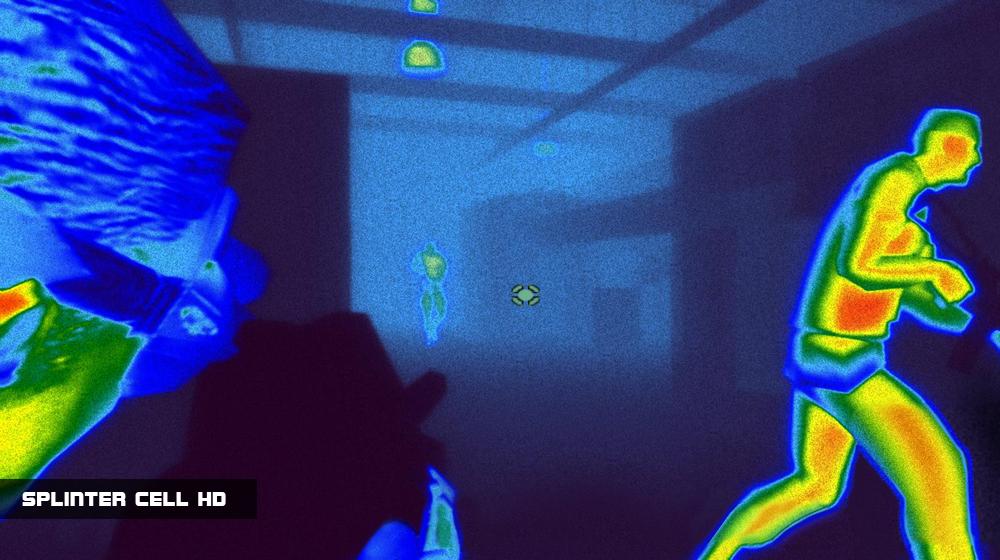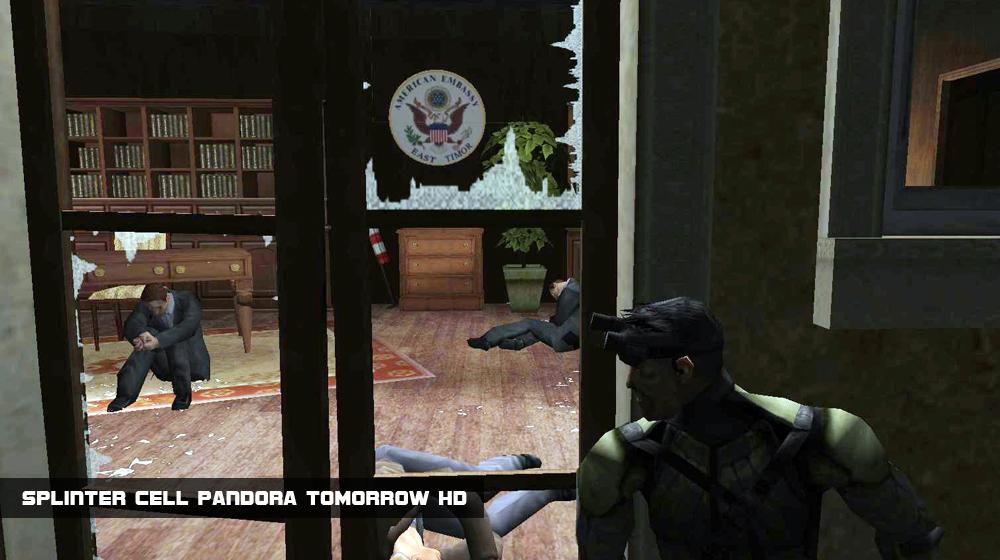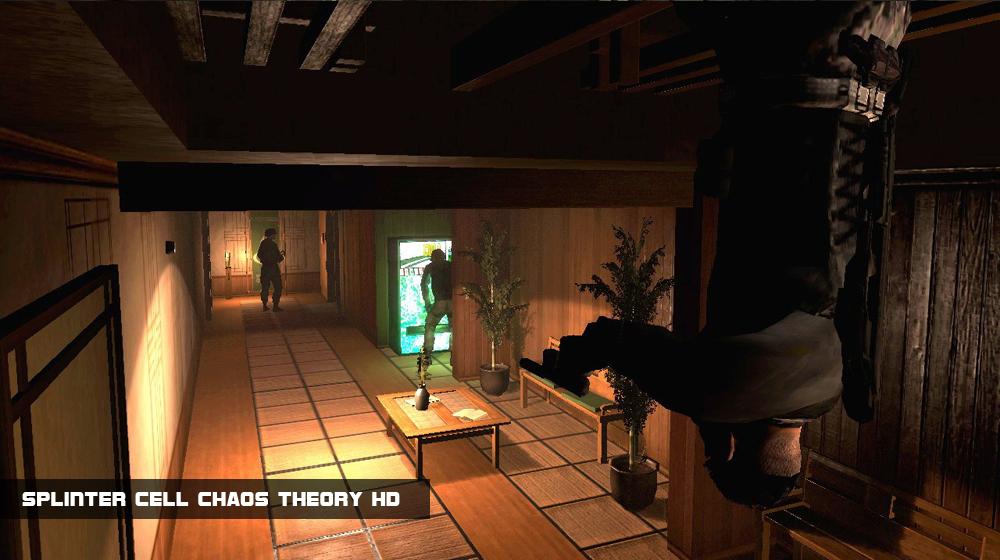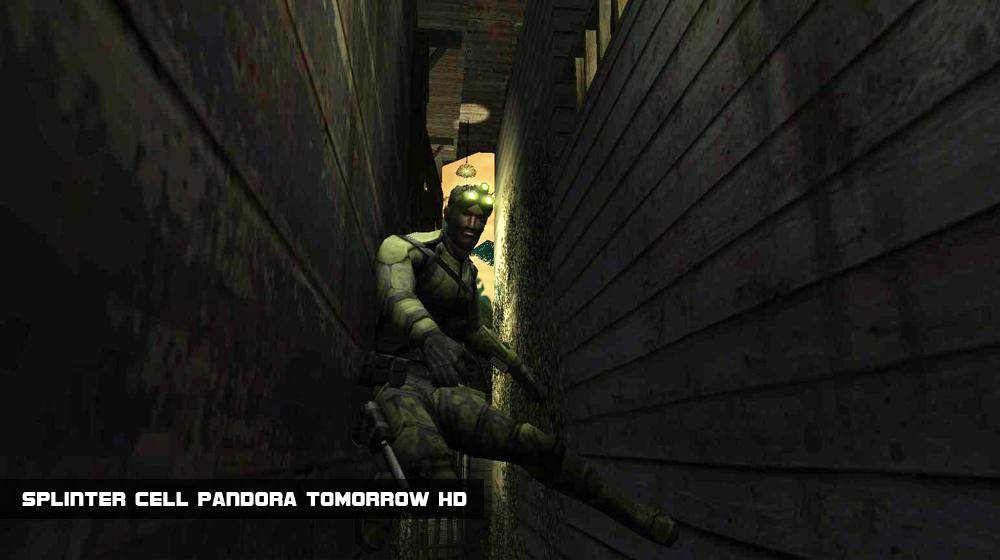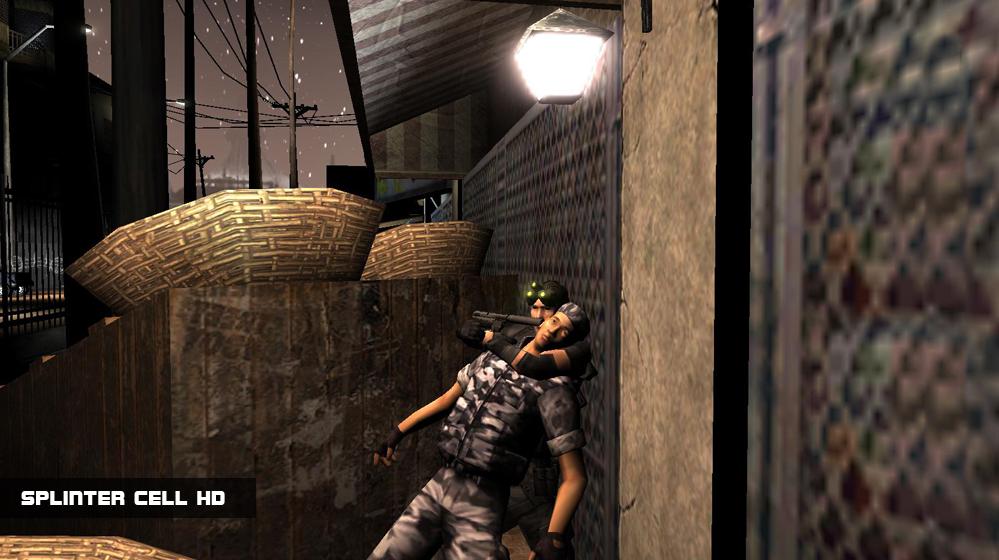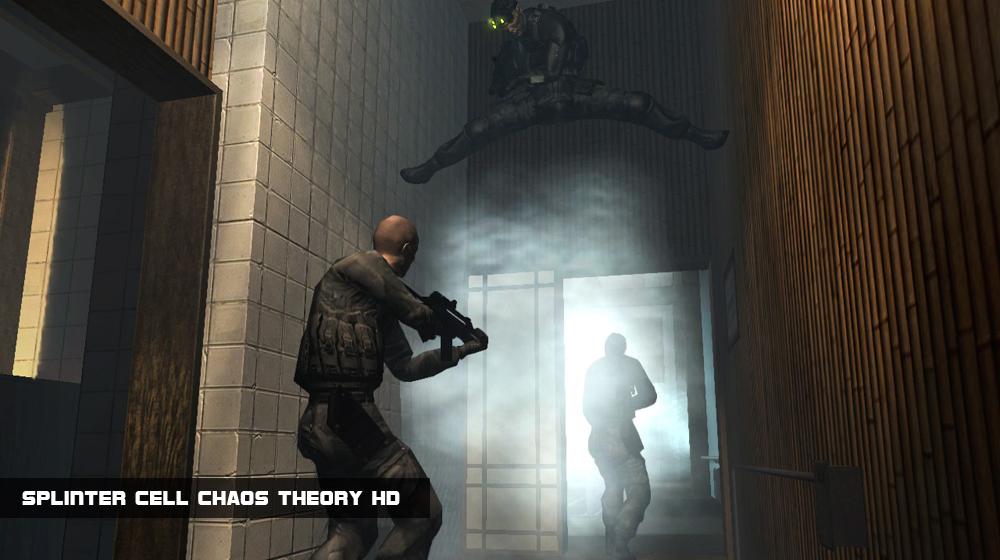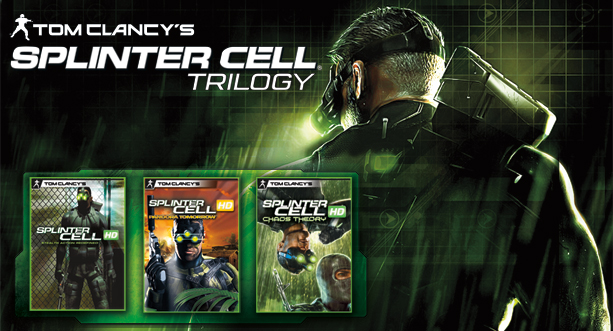With the influx of old classic video games being remastered in high definition for current generation of consoles, Ubisoft is one of the several developers quick to bring us some of its most iconic series. Hot off the heels of the Prince of Persia HD collection, the Tom Clancy’s Splinter Cell Trilogy is now available on Playstation 3 to let the fans relive Sam Fisher’s stealthy exploits. For better or for worse, this is a faithful transition of the original experience; Splinter Cell features pure espionage gameplay that is demanding on the player, the graphics still appear dated despite a HD facelift, and naturally it comes with all the quirks that are consistent with games from the past. Having said that, Splinter Cell Trilogy is still a worthwhile venture for die-hard fans, and even for newcomers who are willing to embrace something different.
For those unfamiliar with the Splinter Cell series, you’ll be playing the part of Sam Fisher, a seasoned veteran of Covert Ops and Black Ops recruited by the NSA’s secret sub-agency Third Echelon to initiate a new secret (of course) field unit called “Splinter Cellâ€. Spanning through the series first 3 titles (Splinter Cell, Pandora Tomorrow, Chaos Theory), Fisher will be sent on numerous missions to deal with a variety of situations, ranging from cyber warfare attacks, to biological weapon threats, and even an all-out war between nations.
Now normally for someone as resourceful as Fisher resolving international crisis is just another day at the office, but here’s the kicker: no one must know of Fisher’s and Third Echelon’s existence, and subsequently their hand in the workings of these events. The stories involve the typical one-man-in-defense-of-the-world setup that wouldn’t look out of place in a 007 movie, and they’re intricate enough to be enjoyable if you’re following closely to them. Luckily, almost everything is told through voiced briefings and dialogues, so you’ll rarely be required to crawl through the text to get a sense of what’s going on.
If you haven’t figured out by now, Splinter Cell employs an action-light, stealth-heavy gameplay that requires a lot of finesse and patience. After being dropped into the area of the operations, you will have to navigate Fisher through the level undetected while completing the assigned objectives. Despite being outfitted with some sophisticated weaponry, don’t expect to be able to shoot your way out of a jam – a head-on conflict will almost certainly leave Fisher crippled, or worse, dead. Instead, you’ll be relying on Fisher’s skill set as a Covert Op agent and his less-ballistic arsenal. Fisher’s training has made him extremely athletic, allowing him to move silently, find a path through confined areas, and scale objects. Meanwhile, the night vision and infrared goggles gives an enhanced view of the surroundings, the lock pick will let you past any locked contraption with ease, and the visibility and sound meter gives indication of how easily Fisher can be detected. Even the firearms extend their use beyond taking out enemies, as light sources can be destroyed to create more darkness and space for Fisher to navigate in. There are additional cool gadgets like the camera and the optic cable, and all of this does make you feel like a well-equipped agent ready to handle anything.
Even with all the high tech stuff Fisher is carrying, it’s still not enough if you don’t commit to the way Splinter Cell intends you to play it. You need to proceed with extreme caution, and even more so in the presence of unsuspecting enemies. Moving slowly, sticking to the shadows, and scouting the area for the layout are all par for the course, and additionally you’ll have to deal with whatever situations the game throws at you accordingly. Area is too bright? Shoot out a couple of lights. Enemies holding down a narrow corridor? Perhaps you should create a distraction, such as throwing a bottle to create some noise. Think twice and plan ahead, and that goes double for managing your save files; not saving your progress periodically will set you back considerably upon failure. Engage or avoid, lethal or non-lethal, take your pick: there’s always an alternative solution.
Playing the three titles in succession, it’s easy to see that the game has evolved and refined the mechanics from each Splinter Cell iteration. First of all, the graphics looks markedly improved when you compare the original Splinter Cell to Pandora Tomorrow, and even more so when you compare both of them to Chaos Theory. The controls that were somewhat awkward have become more intuitive by the third title, for example, the elimination of manual prompts for contextual actions (ie. moving into confined spaces). The series seem to have moved from a completely linear to a more open-ended map design in Chaos Theory. The biggest improvement that the series have made over the years is the fact that it’s become a lot more forgiving than before. You’re no longer required to move at the slowest pace possible to avoid instant detection, enemies don’t start gunning for you the second they caught the slightest sound, and it’s now possible to be get away after enemies sense your presence. For every thing the previous title could have done better, Ubisoft remedies it in the subsequent game.
Before you consider dropping your hard-earned money on the Splinter Cell Trilogy, you’ll want to take a long, hard look at the shortcomings of this HD collection. To start off, the game is pretty poorly optimized for Playstation 3; upon booting the game up for the first time, you’re treated to a hefty mandatory install of nearly 6 GB (to give a point of reference, Gran Turismo 5 has an optional minimum install of around 5 GB). If you are considering purchasing the game from the Playstation Network, be prepared to leave your console on for a 10 GB download. Further evidence of bad optimization can be spotted as well during gameplay, as inconsistent framerate in addition to occasional drops are too frequent to be acceptable.
The graphics of Splinter Cell have been cleaned up a fair bit and presented in 1080p. Unfortunately, without a strong artistic style, the once realistic graphics still comes off looking like a product of 10 years. The exception to this would be Chaos Theory, which looks impressive considering the fact that it’s a 2005 release. Considered one of the best titles from the Splinter Cell series, Chaos Theory also benefits greatly from a much-polished gameplay in comparison to the previous 2. One might go as far as to say that the best value would be to pick up Chaos Theory alone via PSN, being the only title that remains standing tall gameplay-wise after all these years.
Available at retail for $39.99, or on the Playstation Network for $14.99 per title, Tom Clancy’s Splinter Cell Trilogy is definitely worth a second shot for returning fans. If you’re unfamiliar with the series, it might be wiser to go with the downloadable title route: start off with Chaos Theory, and work you way backwards should your interest persist. The Collection itself is unlike anything that’s available on the shelves, and those looking for a truly unique, challenging experience should look no further than Splinter Cell Trilogy.





